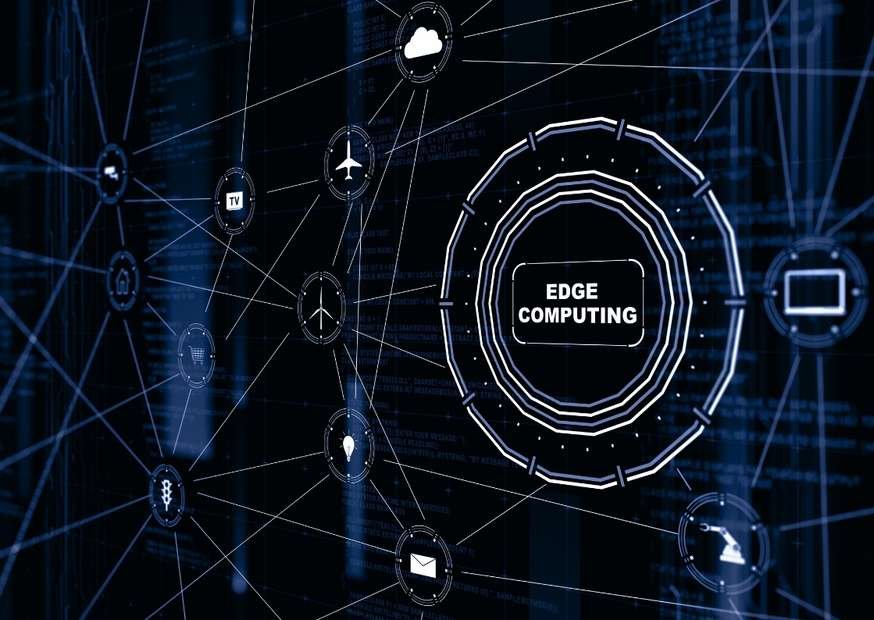- marketing admin
- Articles
The Internet of Things (IoT) is a network of simple devices, such as sensors, actuators, or appliances designed to do a specific task, which needs a computing resource to process and transmit data back to the central database. Edge Computing is such a kind of computing device that handles on-field data from the sensors and does a preliminary level data correction and on-demand transformation before it is sent to the data warehouse.
Edge computing and cloud computing are closely related in a way that each of them depend on the other for building an effective IIoT network. While edge computing handles the raw data feeds from the IoT network devices, and provides telemetry services to the cloud services.
The role of edge computing is more abundant in automobile, factory machinery, oil rigs, mining trucks where on-board edge computing resources, otherwise called as nodes, are capable of processing IoT devices data on-the-fly and transfer them to the cloud servers through IoT gateways. (RedHat, 2022)
Edge vs Cloud Computing
Cloud Computing is a conventional central data store system that collects information from various sources and retains a copy, if required processes data, before writing into the database. It is often referred to as a delivery of computing services through servers, storage units, databases, networking, and intelligence on the cloud using on-the-fly analytics services.
Although Cloud computing is different from edge computing, the edge network or the IIoT network devices is a part of the cloud infrastructure that is required to connect IoT devices. It helps in telemetry of network traffic via the internet to the destination on the cloud that might be later used for analytics purposes.
Edge computing, which is a part of cloud computing, but different in the way it operates, sits at the edge of the network, called the IoT network. Since, IoT network comprises simple, and task specific devices collecting raw data, it needs a primer so that the data is in a usable format for analytics purposes. Edge computing reduces the latency of data readiness, and does the preliminary computing right at the edge network before it is sent to cloud databases.
Unlike cloud computing where centralized computing is the core competency, edge computing is based on distributing computing technique, where real-time data processing is possible, reducing the latency issues that might otherwise be visible. (RedHat, 2022)
Enterprise Use Cases
Edge Computing is the building block of today’s autonomous systems that are deployed in various industries, right from monitoring oil wells, fleet management of mining trucks, and monitoring of vital systems in any renewable energy farms. The power of computing at the very close point to the source of the data stream, enables faster processing of data and helps in speedy decisions based on better operational efficiency.
Autonomous Vehicles
Today, it is no more a dream, self-driving cars are moving people on the roads with efficiently functioning AI systems onboard. This AI system is made of a number of on-board sensors, point cameras, and other gestures sensing equipment, and vehicle health monitoring systems that stream vehicle status back into on-board edge systems.
To avoid lag in operation of vehicles running on road, all instructions must be streamed without any latency issues. Using edge computing devices, data storage and computing can be kept to the closest possible extent for faster processing of data and understanding systems functions in a decentralized manner.
Industrial Automation
Factory floors are changing the way products are being together and in an efficient manner. With the help of edge computing it is possible to monitor and analyze data streams in real-time from hundreds of IoT sensors in the network, without the need to send it to a centralized network.
All machinery, including actuators, appliances on the shop floor can be connected to a locally available IoT network with an edge capability, that adds the power of storage and local processing of data to the network.
Manufacturing facilities heavily rely on IIoT devices for their day-to-day operations and it helps in proactive and predictive maintenance planning avoiding the downtime of machines and judging on the replacement time of any faulty machinery. It helps improve on real-time monitoring and improving the efficiency and uptime of production facilities.
Challenges of Edge Computing
Beyond the wider capabilities of Edge computing, there are a few challenges to look at to better understand the effectiveness of an edge solution and the situations in which it becomes a handy tool for locally processing real-time stream data.
Security
IoT devices are often prone to malware attacks due to its limited availability of resources to run a healthy malware protection application on-board. For this reason, the devices are collected and put into a secure network using a firewall as the gatekeeper for monitoring the traffic flow in and out of these devices. Deploying, upgrading and defining threat policies are the challenging parts to ensure security of the IoT devices.
Managing Data
The IIoT networks are often operating in some remote environment and generating data from various locations. It is necessary to ensure consistency and integrity to engage the data effectively into analytics applications. Also, the challenge is on data privacy, data compliance when being shared across multiple locations geographically separated.
IoT device Maintenance
The distributed nature of edge computing puts a great pressure on maintaining the uptime of the devices. With the concept of edge computing all nodes are separate in operation and with a local data processing unit. Maintaining these IoT devices and updating patches for devices with zero to minimal downtime is a challenging task.
Future of Edge Computing
The upcoming evolution in IoT edge computing is combining the true power of 5G technology into the robust edge computing technology. With the new 5G switchover, the network bandwidth gets broader and pushes huge amounts of data is less time saving on the data transit time and providing better control on the data flow in the edge computing network.
Also, IBM studies suggest that in the coming days 75% of enterprise data will be processed at the edge compared to 10% done at the edge today. (IBM, 2023)
Edge Computing is a new and promising piece of IoT technology framework shaping the future of industries and the way data is exchanged among devices globally in a unified and centralized IIoT network.





